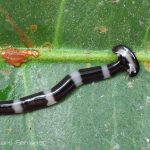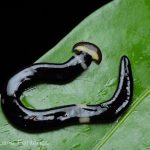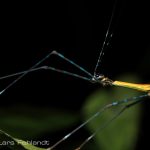An unspecified slime mold from Sarawak / Borneo.
The slime molds (Mycetozoa or Eumycetozoa) are a taxon of unicellular organisms that combine characteristics of both animals and fungi in their way of life, but do not belong to either group.
The group includes just over 1000 species, but the number is considered inaccurate. According to recent opinion, the slime molds no longer represent a common group. The three included taxa Myxogastria, also known as Myxomycetes (as the most extensive group), Dictyostelia and Protostelia, are no longer compiled.
Within biology, the systematic study of slime molds is carried out by botany or mycology.
Slime molds pass through several morphologically extremely different stages during their life. Their respective appearance is inextricably linked to their life cycle.
Slime molds are distributed worldwide with the majority of their species, but occur significantly more frequently and with higher species richness in temperate latitudes than in the subtropics and tropics.
The reasons given for the lower frequency in the tropics are the low light of the forests there (impairment of positive phototaxis), calm winds (detrimental to the distribution of spores), humidity favoring infestation by molds, very acidic soils, a diversity of predators, and frequent, exceedingly heavy rainfall that can wash off or destroy the cells.





